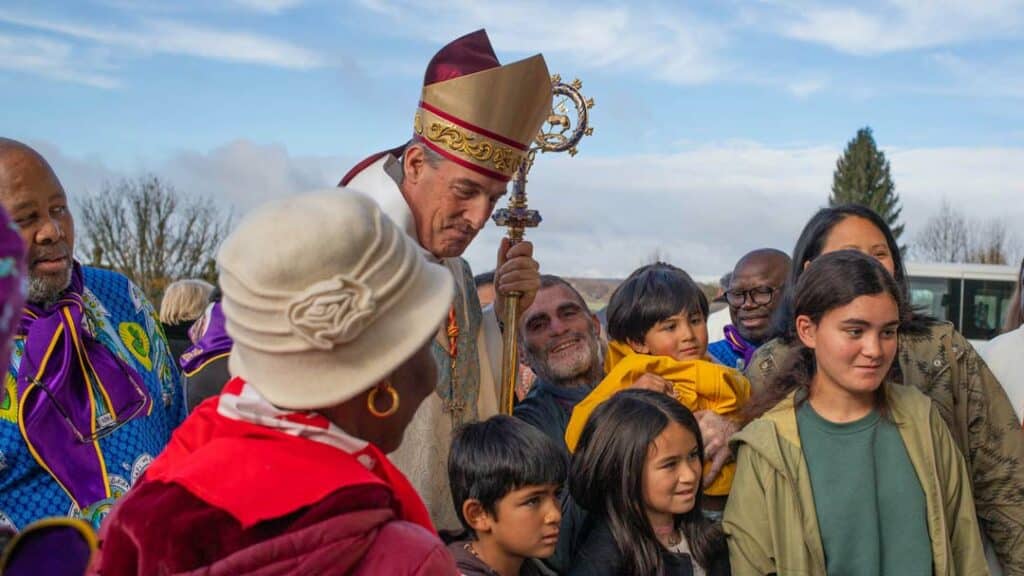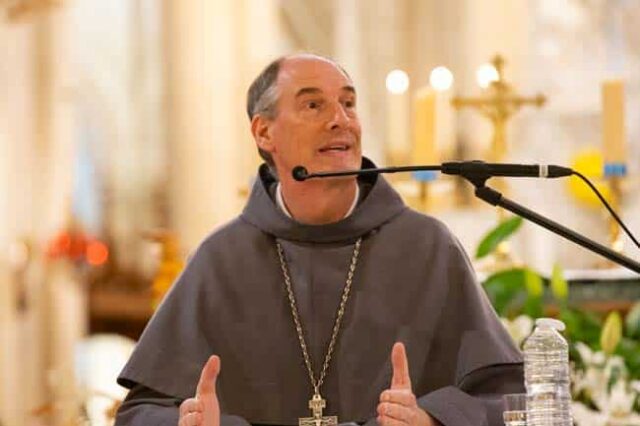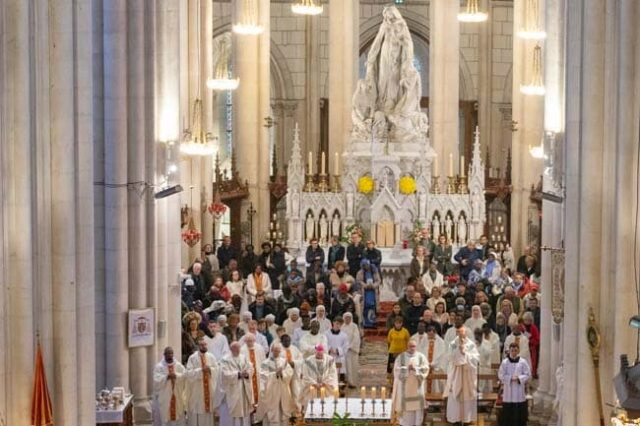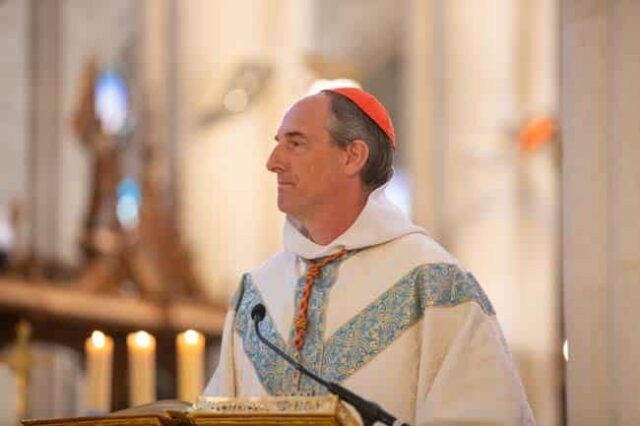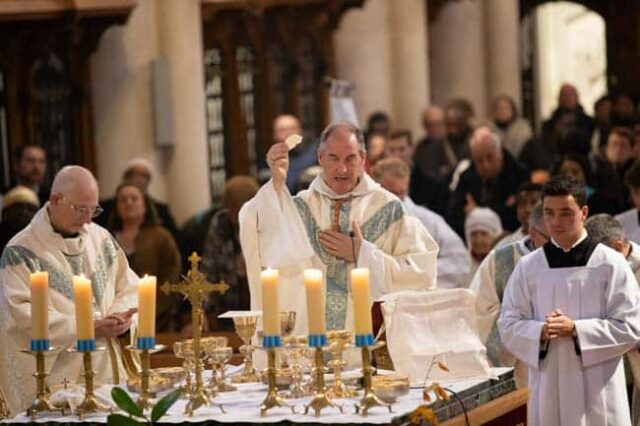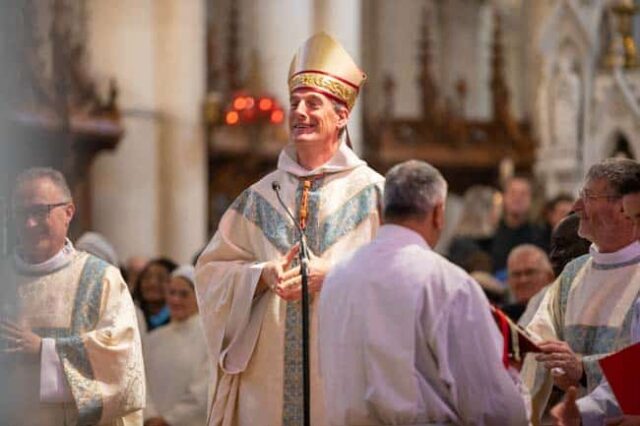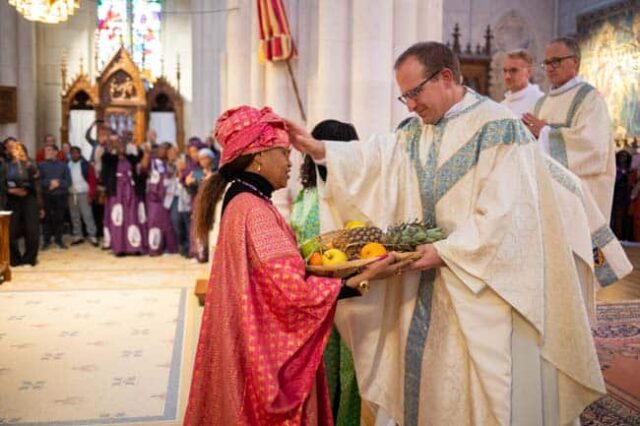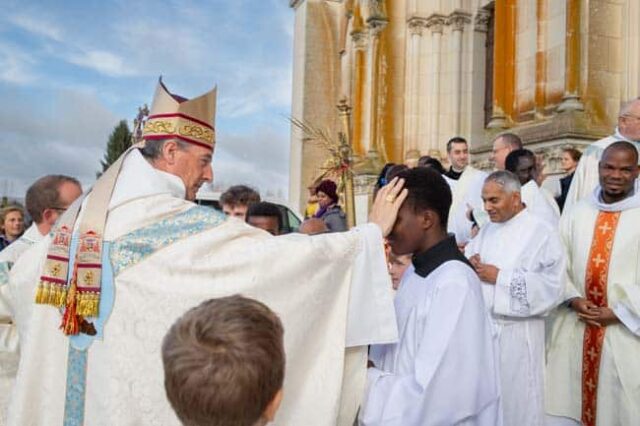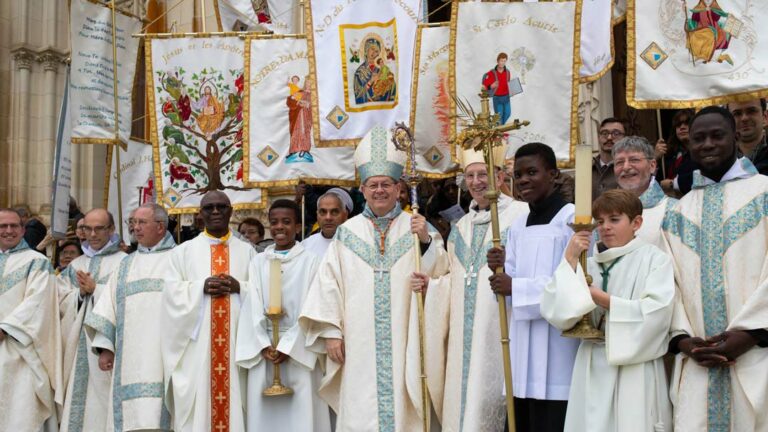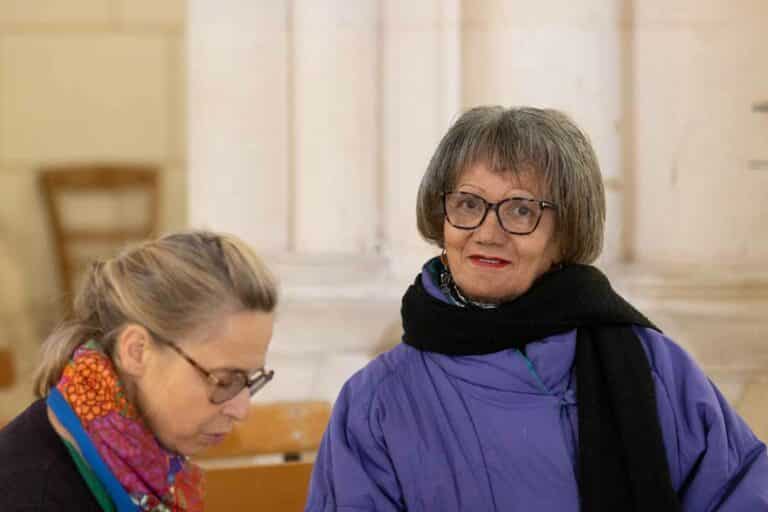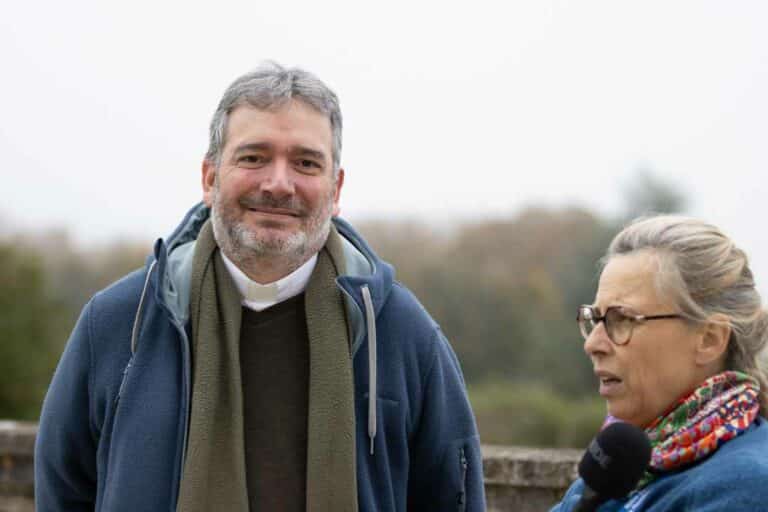“Praying for a beloved deceased person is a way to love them”, claims Cardinal François-Xavier Bustillo in confidence at the end of the Mass of Nov. 16, 2025 at Montligeon.
The Bishop of Ajaccio reflects on what hope means in the face of the death of a loved-one and on the communion that links us to the dead. The context of this pilgrimage, remarkable given the diversity of the participating groups and their great fervor, is an encouragement to reconsider our ties to those who have departed. In this atmosphere of prayer, the Cardinal shares what supports his own mission and what can enlighten each person in their relationship to deceased people.
What does Montligeon mean to you?
Cardinal François-Xavier Bustillo describes Montligeon as “a shrine where people come to find comfort, solace and a communion with all the departed.” Each one seeks to maintain a bond of love with the close members of their family who have passed away. In that sense, prayer provides a way to stay in their presence, with no denial of the realness of separation. During this pilgrimage, he was struck by the liveliness of the participants. The presence of a group from the Paris suburb of Les Mureaux created “an atmosphere of joy” which at the same time reflects the diversity of the Church and it deep unity. This diversity expresses the vitality of the church community, where each person finds their place and makes others richer.
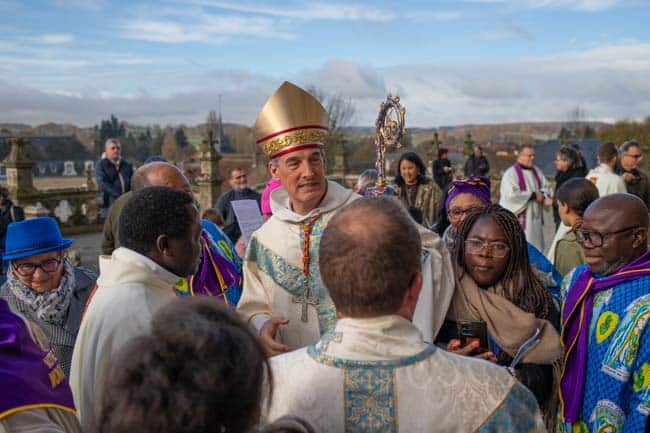
The diversity of pilgrims
“Seeing the diversity of the Church is a wonderful thing”, marvels the Cardinal, referring to people from many different continents, traditions and cultures, all gathered based on the same faith. He makes a connection with the Gospel read today, which recalled the complementarity of the members of the body of Christ. Shrines like Notre-Dame de Montligeon also embody this image. The pilgrimage becomes a place where each family, each country and each community bring something unique. Getting to see all those faces and sensitivities is a confirmation that faith knows no boundaries. It is expressed through simple actions, sometimes through joy or singing, sometimes through tears or silence. However, a common move emanates from this diversity, i.e. hope in the face of death.
What hope is there in the face of the death of a loved one?
When we questioned Cardinal Bustillo on how the death of a loved one can be accepted, he replied calmly: “Our loved ones will always remain in our memory and our heart. They will never be really missing.” Thus, praying for a deceased person opens a path of fidelity. It keeps a bond of love alive, without denying their absence. He adds: “When you have loved someone, the love never goes away and the person you used to love watches over you.” The image of ‘roots in heaven’ is present in the mind of those who experience bereavement. It does not explain everything but it offers inner support, i.e. the deceased still inhabit our life but in a different fashion. According to the Cardinal, prayer enables us to accommodate this change. Based on that conviction, hope in the face of death becomes a way to hold on, to feel supported and to continue to love.
Is there any deceased person you have particularly on your mind today?
Although the Cardinal mentions no particular names, he shares in confidence: “My thoughts are for a few people whom I came across in my life and are now gone, who provided me a lot of support.” He refers to those who shaped his religious calling. In the shrine, he addresses them through a simple prayer: ‘May they keep supporting his mission’. Through these words we are reminded that each person keeps in their mind a constellation of faces, sometimes happy, sometimes sorrowful, but always meaningful. Thus, prayer in Montligeon becomes a space where those links can express themselves freely, with no fear of weakness or nostalgia. This memory though does not lock you in but instead opens onto trust. Gradually, it enables you to move forward towards the future with the deceased, no longer as absent people but as invisible companions.
Which intentions can be entrusted to Our Lady Liberator?
In a world where tensions are particularly strong, Cardinal Bustillo recommends being careful to perform actions which can be sources of life. “There are a lot of lethal words and signs in this world. Blessings and love have to be privileged over them.” Loving is never just a feeling, it is an action, quite discreet sometimes, that creates a bond and restores what gets shattered. He encouraged the people listening to the interview to remain in that movement of love which supports and relieves. This perspective in fact is in line with the shrine’s calling – supporting the living, praying for the dead and moving forward in hope which, even if it does not remove the wounds, enlightens them. At the same time, he reminds that any action inspired by love becomes a blessing for someone, no matter whether the persons are visible or not, alive or dead.

